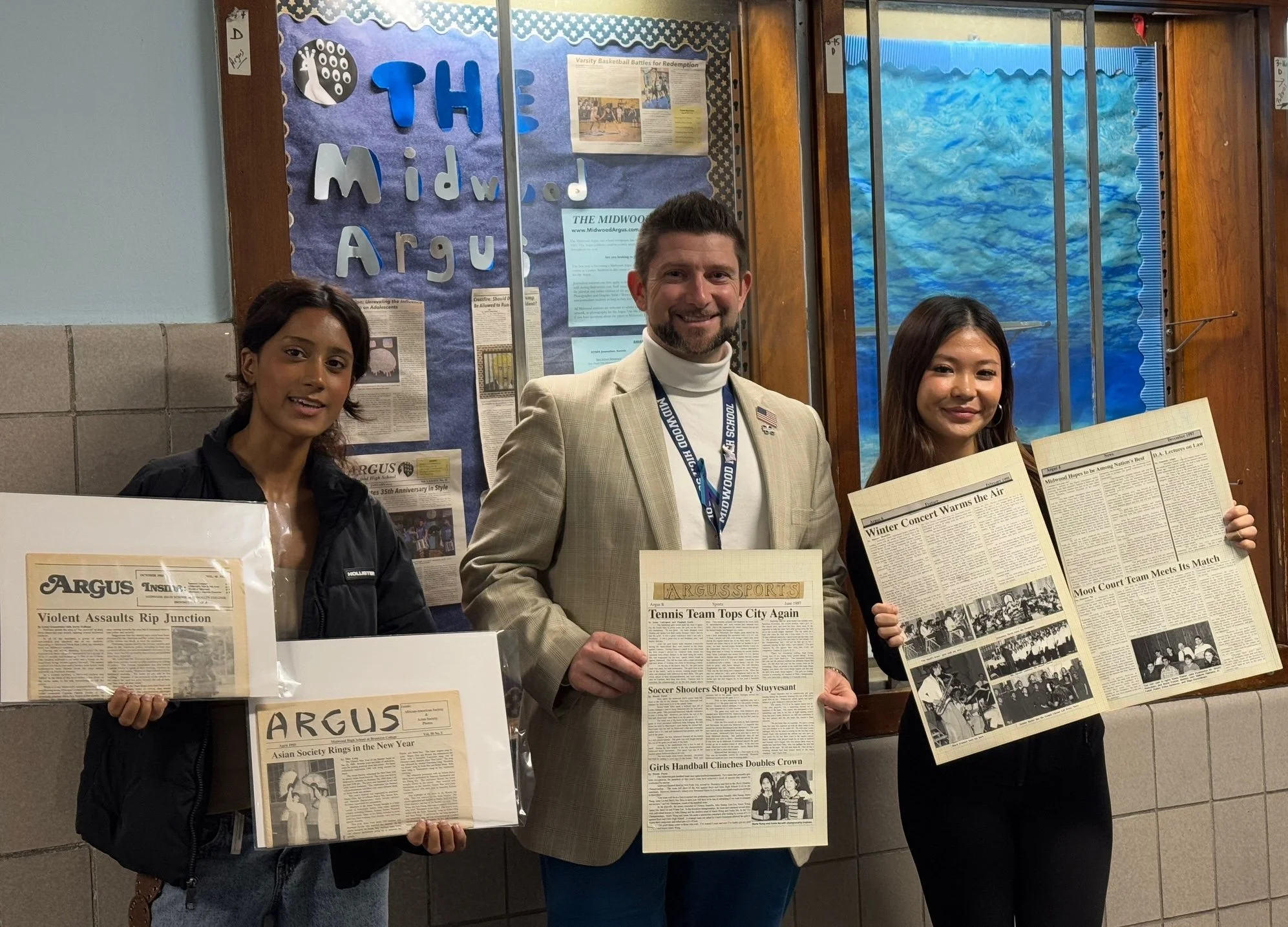How Designing the Argus Has Changed Over the Years
Editors Sabrine Uddin ‘25 and Silvia Feng ‘25 and Principal Quinlan hold up old issues and layout boards from the 1980s and 1990s. Photo: Aster Chan.
By ASTER CHAN and BRENIECE NG
Ever since it made its debut in May 1941, the year Midwood was founded, the Argus newspaper has been a reliable voice for the student body. But have you ever wondered how Argus evolved over those eight decades?
During its earlier years, producing an issue of the Argus was a meticulous and labor-intensive process. Without modern technology, every aspect had to be done by hand. For many decades, the issues were formatted using a typewriter.
Even in the 1990s, the process was not much different than it was in the 1940s. After the text was generated, X-Acto knives and scissors were used to cut the articles into pieces. Occasionally, students would accidentally cut into a line of text, forcing the staff to repeat the entire process. On oversized layout boards, melted wax, chosen due to its non-toxic nature and low stickiness compared to glue, was used to stick the cut-out articles onto the board.
Each page was laid out by hand, and staff often stayed until 9 p.m. to finish an issue, sometimes even being kicked out by security.
Photographs were also difficult to capture. Without the screens that modern cameras have, photographers had to blindly snap multiple pictures and wait for the film to be developed in a lab. Oftentimes, only 1-2 pictures out of 10-20 shots were suitable for publication. Fortunately, there was a store in the Junction where editors could get their film developed.
Getting the newspaper itself printed was not as easy. Once completed, the paper had to be transported to Manhattan, where the printer essentially took a picture of each page for reproduction. Since the layout boards were hand-delivered, pieces of text sometimes flew away, especially the tiny captions glued on under photographs. Thankfully, with advancements in technology, producing issues of Argus has become significantly easier since then. Now, the paper’s physical layouts are created using Adobe’s InDesign software and are then emailed directly to a printer (no more late night drives).
Over the years, Argus has undergone many significant changes within its pages as well, adapting to modern times and a shifting society. Early issues from 1941-1945, during World War II, often included content focused on the war effort. And since Argus was not entirely funded by the school, earlier issues relied heavily on advertisements from colleges, companies looking for trainees, and local businesses.
These early volumes also reveal the societal biases of the times. For instance, sports teams were exclusively male, and roles such as block captains, introduced as part of the war effort, were also limited to boys.
The Argus has a long tradition as an open, uncensored platform for student voices, upholding the values of the free press. The paper’s original (if melodramatic) motto, “Sleepless, the one-hundred eyed Argus watches” remains the paper’s founding vision as it approaches its 85th birthday, still seeking truth in a world where many accept things at face value.
Many thanks to Ms. Catherine Kaczmarek, former Argus advisor (1989-2018), for providing information for this article.

